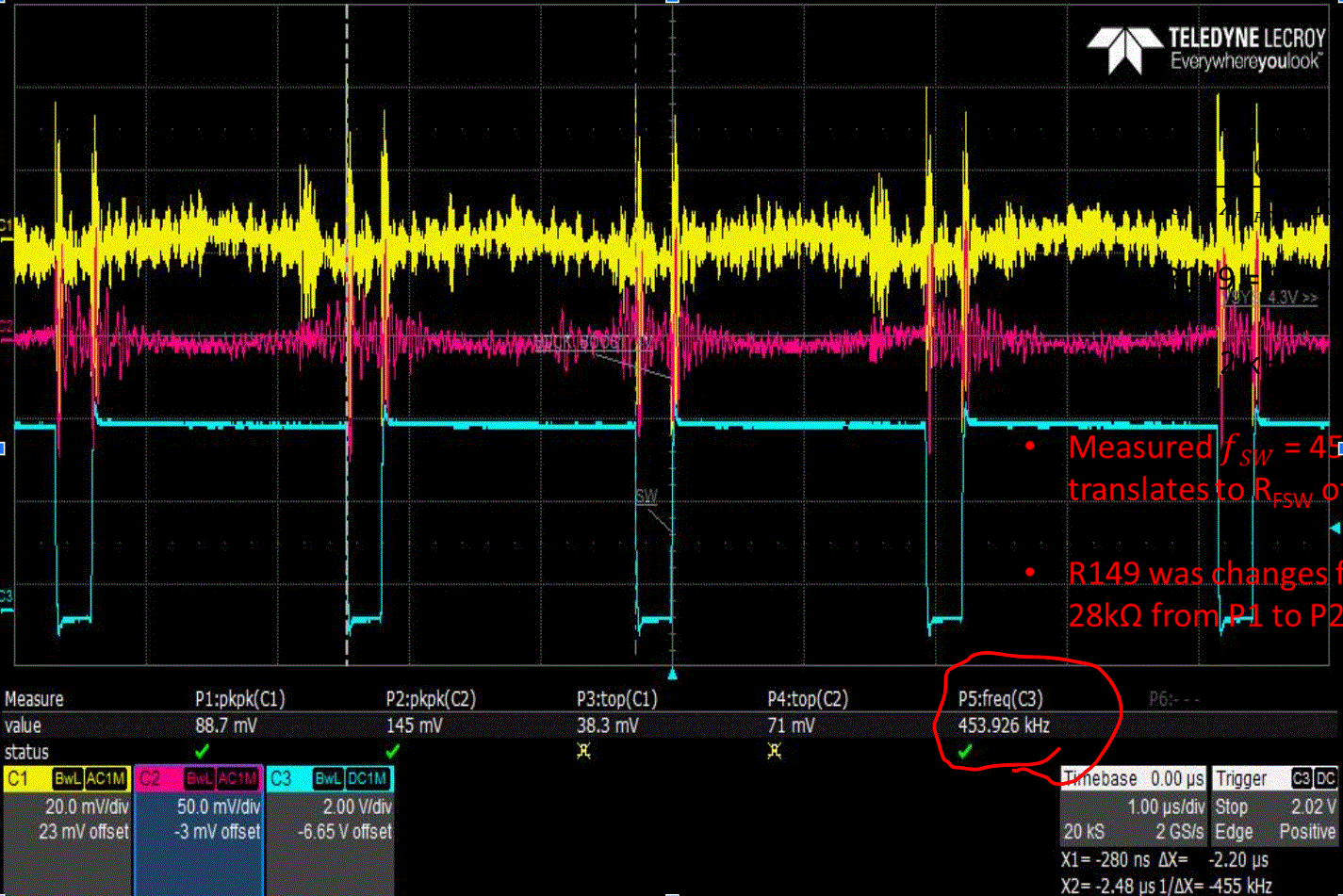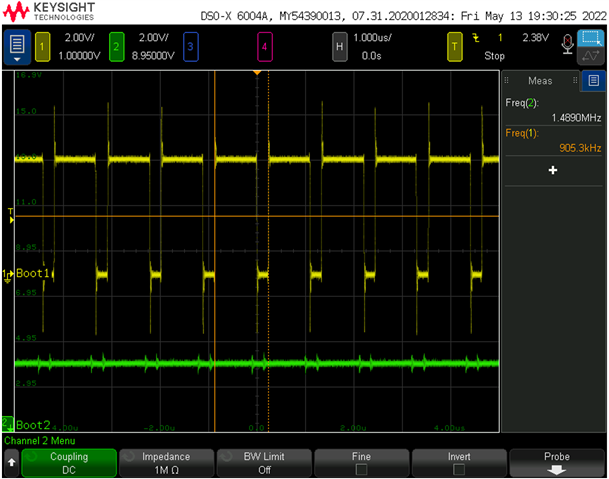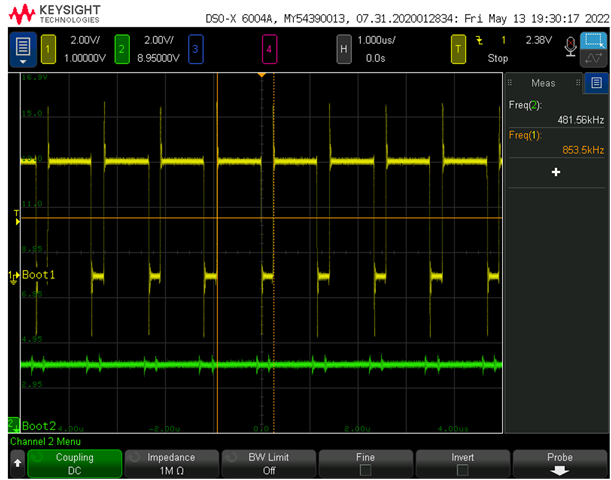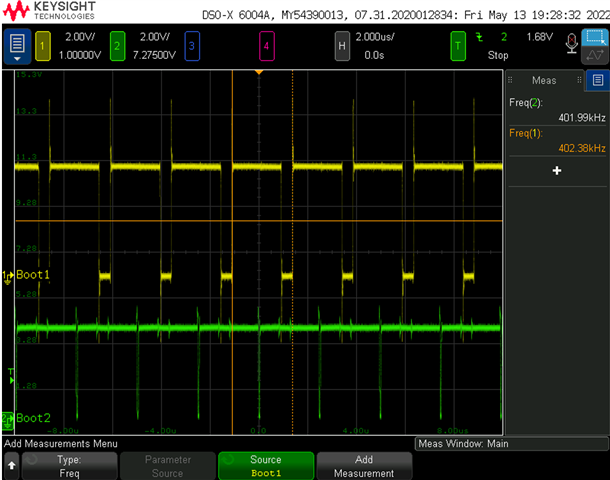Hi Sir,
The TPS552882-Q1 which switching frequency is not meet our setting by resistor.
We set the internal Vcc source and PWM mode on the TPS552882-Q1. And we connect the FSW pin to 28kohm and tie it to the ground.
So that means the internal clock will be 704.2khz, but we measured the internal clock frequency only 453.9khz.
I have attached the our schematic and the measurement waveform. Could you help clarify the root cause?






